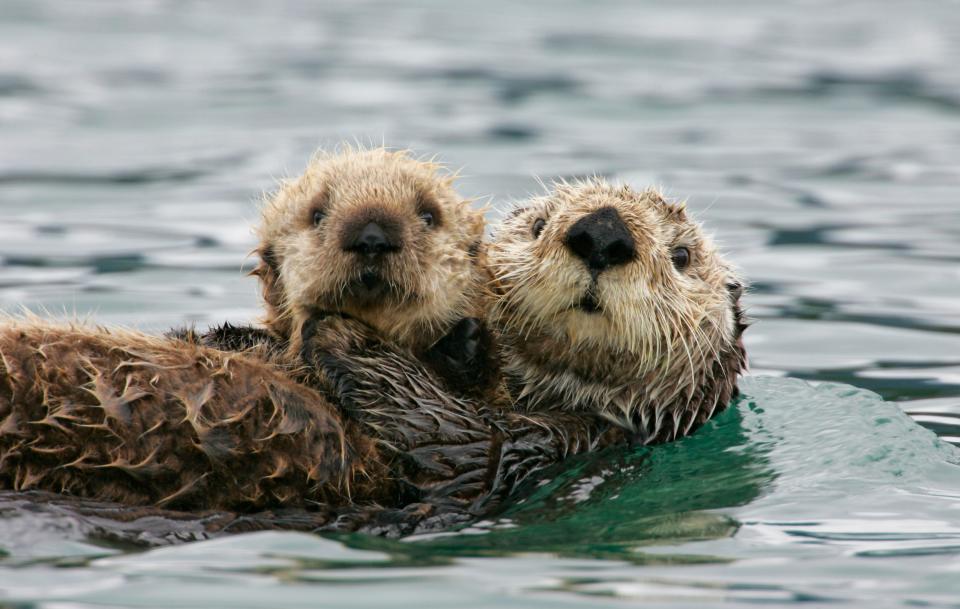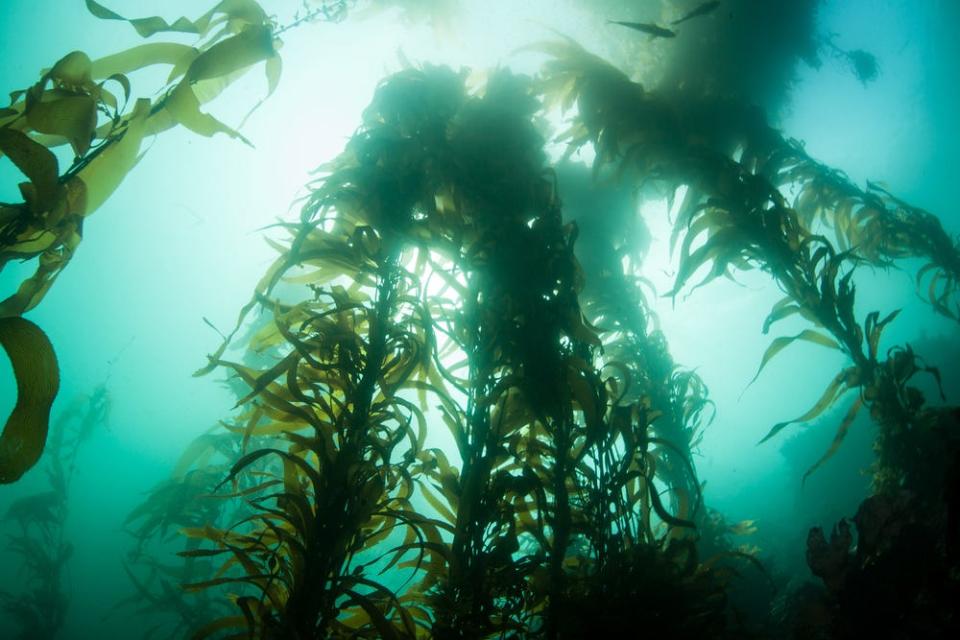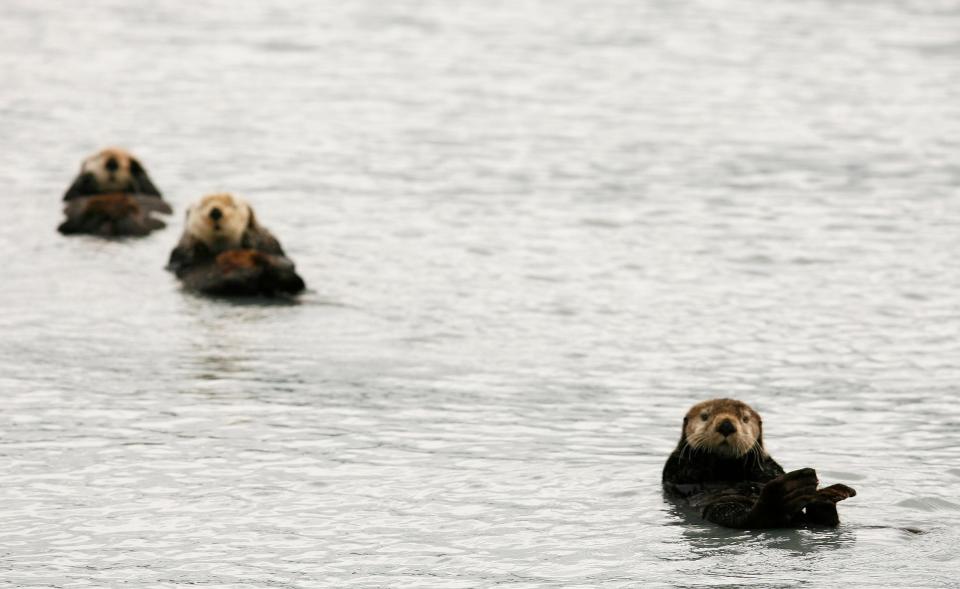How US nuclear tests in the '70s led to today's thriving otter population on the Pacific west coast
In 1971, the US set off its largest underground nuclear weapon test at a remote Alaskan island.
Before, scientists managed to relocate hundreds of sea otters that may have died in the explosion.
Their populations are thriving in Alaska, Canada, and Washington but causing some problems.
When a large earthquake shook Alaska's Aleutian Islands in 2014, scientists with the US government hurried to assess the damage on Amchitka Island. They were looking for leaking radiation from underground nuclear tests performed decades before.
During the first half of the 20th century, the remote island had been a wildlife preserve, until the US government converted it into a nuclear test site.
Three atomic weapons went off at Amchitka in the late 1960s and early 1970s, including the largest underground detonation the US has ever set off.
No humans lived on the island, but the biggest blast, in 1971, killed at least 900 sea otters. The Atomic Energy Commission, the government agency in charge of nuclear research, had predicted at most 240 otters would die.
If ecologists and others hadn't pushed to relocate some otters before the detonation, it probably would have been much worse.
"There was pressure from the state of Alaska as well as environmental groups," conservation biologist and author, Joe Roman told Business Insider. "They ended up moving hundreds of otters."
Roman wrote about the otter relocation in his new book "Eat, Poop, Die: How Animals Make Our World."
Why were otters recolated?
By the time the AEC was looking at Amchitka in the 1960s, the island's sea otter population was one of only a handful that had survived the sea mammals' near extinction a century earlier.
Their luscious pelts were prized as "soft gold." In the 1700s and 1800s, hunters killed about one million sea otters to sell their fur.

The drop in population was alarming, from between 150,000 to 300,000 in the early 1700s to around 2,000 just 200 years later. Russia, Japan, Britain, and the US signed a fur treaty to help protect the animals in 1911. Over the next several decades, sea otter numbers rose to around 30,000.
By 1959, the charismatic animals were starring in a nature film, "The Sea Otters of Amchitka." No one wanted to see those adorable otters decimated by an underground explosion, John Vania, an otter specialist with the Alaska Department of Fish and Game, told the AEC.
A confluence of occurrences made many Americans more environmentally conscious in the 1960s, from Ohio's Cuyahoga River continually catching fire to Rachel Carson's exploration of the dangers of pesticides in her book "Silent Spring" to the largest oil spill in US waters at the time, near Santa Barbara, California.
Protestors didn't want a third nuclear test at Amchitka at all. In fact, the conservation group Greenpeace formed out of an organization trying to stop the test.
A US Fish and Wildlife Service biologist, Karl Kenyon, had already worked on relocating some otters to areas they'd lived before the 18th century hunting. The detonations at Amchitka were a good reason to move even more, ecologists and biologists thought.
If the AEC would pay for it, Vania said, the scientists could relocate the otters.
The return of the kelp forests
In addition to funding the relocation, the AEC supplied the scientists with a plane that could hold over 50 otters. Over the next few years, the scientists captured more than 700 otters in nets and carted them to southeast Alaska, Washington, Oregon, and British Columbia.
Over the next 50 years, the sea otter populations in many of these locations, like Sitka, Alaska, would go from several dozen to hundreds or thousands. "All the sea otters — of which there are thousands — in Sitka now are the descendants of these airlifted sea otters," Roman said.
Eighty-nine otters went to British Columbia. Now there are over 7,000. An estimated 125,000 sea otters live in the Pacific Ocean as of 2015.
The otters' presence soon changed the landscapes where they live today. Their relocation allowed biologist Jim Estes to study islands with and without otters. As a result, he realized there was a link between otters, sea urchins, and kelp forests.

"In the absence of sea otters, you have a lot of sea urchins," Roman said. "When you have a lot of urchins, they create what's called urchin barrens."
The sea urchins eat the kelp holdfasts, which anchor the algae. Roman compares it to sawing down a forest. The kelp eventually disappear.
One of the otters' favorite foods is sea urchin. And they can eat a lot of them. "They have very high metabolisms," Roman said. "They're eating machines." When the sea urchin numbers drop, the kelp return.
In Sitka Sound, the sea otters reduced the sea urchin population by 99%. Kelp forests exploded in return.
"The forests provide food and shelter for more than 800 species, including sea lions, harbor seals, lingcod, gobies, moray eels, octopuses, crabs, sea anemones, and brittle stars," Roman wrote.

The kelp forests are also amazing at capturing carbon, a concern for the warming planet.
The otters can also affect land animals, Roman wrote, either directly, as food for wolves on Alaska's Pleasant Island, or indirectly, with the kelp forests that attracted birds that prey on fish.
Competing with otters

Roman called the sea otter relocation one of the "most successful cases" of its kind. However, he said, "you don't really release animals in that way these days."
For one thing, the US didn't consult indigenous and First Nations people before unleashing the otters. The mammals brought back the kelp forests, but they destroyed a reliable source of food for many people.
"Sea otters don't just eat urchins," Roman said. "They also eat geoducks and other valuable benthic invertebrates in the area." That includes crabs and clams. "And of course that brings them into conflict with fishers in that area," he said.
Suddenly, otters appeared where they hadn't been for generations. "So no one remembers having sea otters in that area," Roman said. "They're used to harvesting these invertebrates, and they're quite abundant in the absence of a predator."
Their voracious appetite is one reason some people call otters the "rats of the sea." For some Alaskans and Canadians, they're seen as a nuisance.
When otters arrived in new regions of Alaska, Washington, and Oregon in the '60s and '70s, it was still legal to hunt them. The Marine Mammal Protection Act of 1973, changed that, though Alaska Natives can still hunt otters, whales, and seals.
"I spoke to Mike Miller, who's a native Sitkan," Roman said. "He promotes this idea of some balance" between the human population and the otters.
It's an idea echoed by researchers, too. "We are wondering if there is a sweet spot where you can have it all," ecologist Kristy Kroeker told the BBC.
While sea otter numbers are far greater than they were 100 years ago, the animals are still endangered. They also face challenges due to the climate crisis. And not all the relocated populations survived. They disappeared from Oregon after about a decade.
But sea otters' success elsewhere — especially their impact on kelp forests — has made Oregon want to try reintroducing them again, just with more caution and the input of coastal tribes this time.
Read the original article on Business Insider

